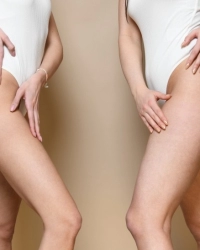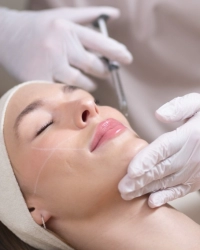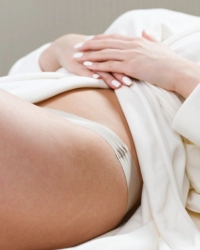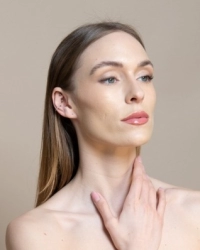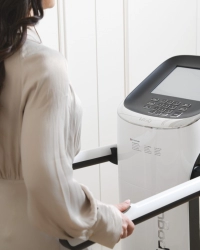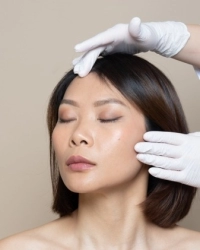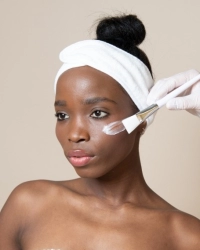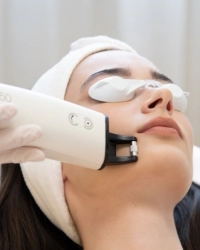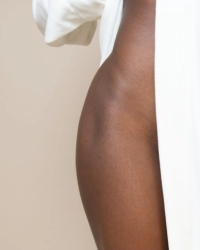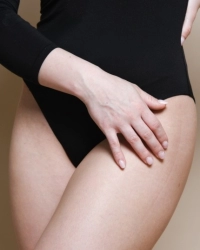Acne scar removal
Distracting acne scars on your skin can become almost entirely undetectable thanks to laser therapy!
How do acne scars develop?
Acne is not only a problem for the skin because of the discomfort caused by inflammation, but also because of the long-term damage to skin function and structure, depending on the extent of the inflammation. The scars that remain after acne can vary, with reddish and brownish discoloration due to inflammation lasting for months or even years, however, they respond remarkably well to treatments.
If not just discoloration remains, but also indentations, so-called atrophic scars, which need professional attention, as the body cannot resolve the resulting tissue loss on its own. These typically develop when inflammation spreads to deeper layers in the skin and causes tissue formation dysfunction in the scar tissue:
- lack of fibers makes the surface uneven and textured blood circulation is impaired
- developing dehydrated skin
- the sebaceous and sweat glands are unable to regenerate.
Besides the scarring, acne can also lead to hyperpigmentation problems, which can be removed with laser. Find out more about laser pigmentation removal!
What kind of scars can develop from acne?
Acne scars usually take three different forms on the surface of the skin.
- Rolling: wide and shallow scars with undefined edges.
- Boxcar: U-shaped, crater-like, wide indentations with sharp edges.
- Icepick: narrow but very deep indentations/holes with steep edges.
- Hypertrophic/Keloid: uneven, thickened scars that emerge from the surface of the skin.
In most cases, acne causes atrophic scars due to underproduction of collagen. The atrophic scars are indented compared to the surface of the skin, forming dents, crater-like holes. Sometimes hypertrophic or keloid scars may also develop, which are the result of overproduction of collagen. These scars extend from the level of the skin.
Poking or picking at acne is extremely dangerous for the skin, as it increases the chances of scarring and also forcing bacteria into the follicle that created the acne. The follicle ruptures from the pressure, allowing the bacteria to leak into the already inflamed area. Then the bacterial overgrowth causes the inflammation to spread and the scarring process begins.
Laser treatments
Laser treatments are now a great way to minimize the scars left behind by acne. The removal can be achieved with ablative or non-ablative laser treatments, all using precise and safe laser technology.



Different technologies
- Ablative treatment uses a fractionated laser to vaporize the damaged skin around the scar to restore the healthy skin and stimulate collagen production.
- In the non-ablative procedure, micro-injuries are made in the deeper layers of the skin with a high-energy laser, making the scars barely visible on the skin's surface. The skin's natural self-healing process kicks in: collagen and elastin production is intensified.
Unique, personalized protocol
For the best results, we can combine treatments by creating a personalized treatment plan, including at-home skin care protocols and also aligning aesthetic procedures.

Procedure
The first step is to thoroughly prepare the skin surface for laser treatment. The affected areas are cleaned of any impurities, fully disinfected and numbed to ensure the least possible discomfort during the treatment.
The laser technology used will be based on your personal treatment plan, so the exact procedure may vary from person to person. We scan the area to be treated with the laser device: thanks to the high energy of the laser light, we vaporize the scarred skin and stimulate the skin's natural regeneration process.
Finally, a special soothing cream and sunscreen is applied to the surface of the skin. During the treatment, you will need to wear protective eyewear to shield your eyes from the laser light. At the end of the procedure, you will be given detailed information on the aftercare protocol.
Prices
The consultation fee is always payable above the treatment price.
| Dermatological consultation and examination | 35 000 Ft /session |
| Aesthetic consultation with Observ 520X facial diagnostics | 15 000 Ft /session |
Appointment
Service
Selecting a location

Selecting a specialist

Laser treatment is recommended in the following cases:
- any type of scar due to acne,
- for any type of scarring caused by other types of inflammation,
- small superficial scars and uneven surface caused by cosmetic cleansing.
Avoid solarium use and sunbathing in the previous weeks before treatment.
The final result of the treatments are not visible immediately, it can take up to 4-6 months for the cells to fully regenerate. The type of laser treatment will determine when the results will be apparent: ablative treatments will provide visible results after 4 weeks and non-ablative treatments after a few sessions. After laser treatment, acne scars do not disappear completely, but they do not remain prominent and distracting to the eye, and they can become almost invisible.
The type of acne scar will determine how many sessions of treatment are needed. In general, we recommend 2-4-8 sessions depending on the type of scar and the chosen approach, with a minimum of 4-6 weeks between each session. It is very important to ensure extra attention to sun protection between treatments and in the months after the treatment.
The recovery time after the procedure is 1-10 days, depending on whether an ablative or non-ablative treatment was used to remove the acne scars. After the treatment you may experience redness and swelling, and a burning sensation on the treated site which will disappear within a few days. The treated area should be gently washed every day and followed up with a special soothing cream. Make-up should not be used in the days after the procedure and avoid strong sunlight, solariums and saunas for 4-6 weeks.
The treatment should not be performed during pregnancy, breast-feeding, active skin infection or febrile illness, and taking photosensitising medication or blood thinners is also considered as a reason for exclusion.

